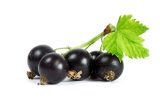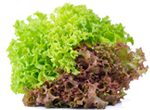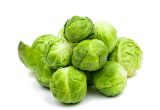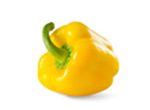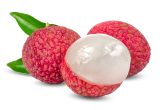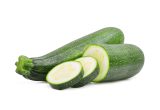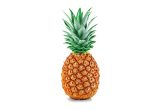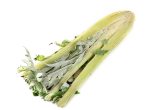Banana

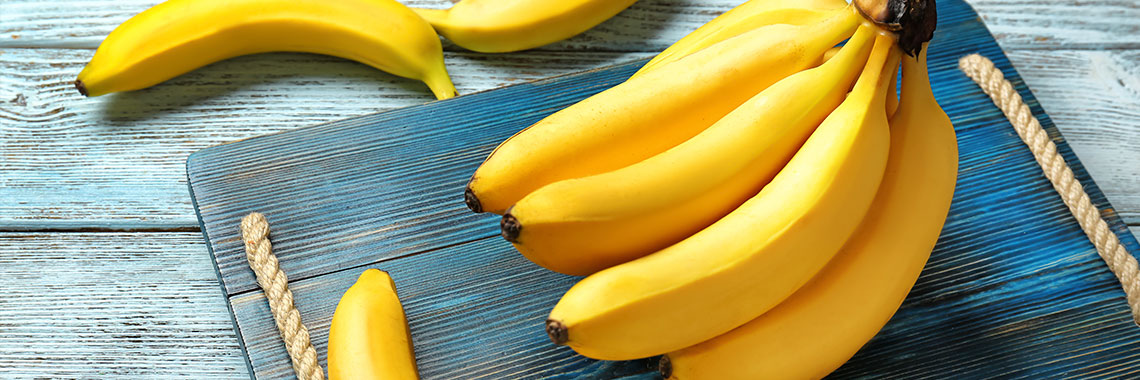
Description
- The banana tree (Musa acuminata L.) belongs to the Musaceae family.
- It is a plant found in regions with a tropical or subtropical climate (Xu, 2014). The banana tree is thought to be native to the islands of Southeast Asia (Li, 2013).
- The main banana varieties are Enano, Morado, Valery and Macho (Utrilla-Coello, 2014).
PHYSICAL AND ORGANOLEPTIC CHARACTERISTICS
- Covered with a yellow skin that becomes mottled when ripe, it has tender, sweet, very soft flesh (Association Interprofessionnelle de la Banane).
- Factors such as an increase in polyphenol oxidase (PPO) enzyme, pH, temperature and oxygen availability are likely to cause browning of bananas. Browning affects the appearance, sensory properties (taste, smell and texture) and nutritional value of the fruit (Bakare, 2016).
- Bananas are high in starch, a complex sugar composed of 20% amylose and 80% amylopectin (Cordenunsi-Lysenko, 2019). During ripening, the starch is converted to simple sugars (fructose, glucose and sucrose) that give bananas their sweet taste (Bhuiyan, 2020). This conversion provides energy for the processes responsible for colour change, synthesis of volatile compounds and softening of the flesh (Cordenunsi-Lysenko, 2019).
- The starch content varies among different banana varieties, which are very diverse (Bhuiyan, 2020).
- Typical banana flavour compounds are produced during a short period of ripening. The predominant volatile components vary across different banana cultivars, giving them their unique flavour. For example, the volatile 3-methylbutyl butanoate is the predominant ester in the Cavendish cultivar (Zhu, 2018).
- Generally, esters, such as isoamyl butanoate, 3-methylbutyl acetate and isoamyl isovalerate give a fruity flavour to bananas (Zhu, 2018).
- 246 volatile compounds have been identified in bananas, including 112 esters, 57 alcohols, 39 acids, 10 aldehydes and 10 ketones, but only 12 compounds are thought to contribute significantly to their flavour (Zhu, 2018).
COMPOSITION CHARACTERISTICS (excluding macronutrients, vitamins and minerals)
- The polysaccharide, α-(1 → 6)-d-glucan, is highly present in bananas. It is believed to enhance the immune system by increasing the proliferation or stimulating the cells involved in this system, namely T cells and macrophages (Yang, 2019).
- Banana peel and flesh contain various phenolic compounds, such as gallic acid (a hydroxybenzoic acid), catechin, epicatechin (flavanols), tannins and anthocyanins. In addition, the total phenol content increases as bananas ripen, averaging 7 mg/100 g of fresh weight. These phenolic compounds have a protective role against free radicals responsible for ageing and various diseases (Singh, 2016).
- Its high starch content gives it cholesterol-lowering properties as well as beneficial effects on digestion and the gut.
- Bananas also contain serotonin which helps prevent or overcome depression and relaxes the body (Singh, 2016).
RAW
The following values are approximate and depend on variety, season, ripeness, cultivation conditions, etc. A banana provides an average of 90.50 calories (kcal) per 100 g, i.e. 383 kJ. A banana weighs on average 120 g, which represents an energy intake of about 108.60 kcal.
COMPOSITION TABLE
For each nutrient, the tables provide information on the content, minimum and maximum values, as well as the percentage of the Dietary Reference Values (DRVs) per 100 g net of banana (flesh).
MACRONUTRIENTS
| Constituent (g) | Average content |
Min-Max per 100g |
DRV% |
|---|---|---|---|
| Water | 75,80 | 71,30 - 81,90 | - |
| Fibers | 2,70 | 1,40 - 3,70 | - |
| Carbohydrates | 19,70 | 17,40 - NC | 7,58 |
| Sugars | 15,60 | 7,51 - 16,20 | 17,33 |
| Lipids | < 0,50 | 0,07 - 0,70 | - |
| Saturated fat | < 0,01 | NC - 0,11 | - |
| Protein | 1,06 | 0,20 - 1,88 | 2,12 |
| Constituent (g) | Amount | Min-Max | DRV% |
|---|---|---|---|
| Water | Ciqual 2020 (valeur issue des analyses Ciqual-Aprifel 2017) | - | - |
| Fibers | Ciqual 2020 (valeur issue des analyses Ciqual-Aprifel 2017) | - | - |
| Carbohydrates | Ciqual 2020 | - | Règlement (UE) N°1169/2011 du parlement Européen et du conseil du 25 octobre 2011 |
| Sugars | Ciqual 2020 (valeur issue des analyses Ciqual-Aprifel 2017) | - | Règlement (UE) N°1169/2011 du parlement Européen, et du conseil du 25 octobre 2011 |
| Lipids | Ciqual 2020 (valeur issue des analyses Ciqual-Aprifel 2017) | - | Règlement (UE) N°1169/2011 du parlement Européen et du conseil du 25 octobre 2011 |
| Saturated fat | Ciqual 2020 (valeur issue des analyses Ciqual-Aprifel 2017) | - | Règlement (UE) N°1169/2011 du parlement Européen et du conseil du 25 octobre 2011 |
| Protein | Ciqual 2020 (valeur issue des analyses Ciqual-Aprifel 2017) | - | Règlement (UE) N°1169/2011 du parlement Européen et du conseil du 25 octobre 2011 |
Zoom on carbohydrates
- The energy of bananas comes mainly from their carbohydrates, up to 19.70 g per 100 g.
- Their carbohydrate content is higher than the average content in fruit (11.31 g per 100 g).
- They are mainly composed of sucrose (7.90 g per 100 g), glucose (3.90 g per 100 g), fructose (3.80 g per 100 g) and starch (3.80 g per 100 g).
Zoom on fibres
- Bananas provide a significant amount of fibre (2.70 g per 100 g), which is slightly lower than the average value found in fresh fruit (2.77 g per 100 g).
Zoom on proteins
- The amount of protein provided by bananas (1.06 g per 100 g) is higher than the average amount found in fresh fruit (0.93 g per 100 g).
Zoom on lipids
- Bananas are fat-free* as they contain less than 0.5 g per 100 g.
Regulation (EC) No 1924/2006 of the European Parliament and of the Council of 20 December 2006 on nutrition and health claims made on foods.
MINERALS AND TRACE ELEMENTS
| Constituent | Average content |
Min-Max per 100g |
DRV% |
|---|---|---|---|
| Calcium (mg) | 5,10 | 3 - 9 | 0,64 |
| Chloride (mg) | 79,80 | - | 9,98 |
| Copper (mg) | 0,06 | 0,025 - 0,19 | 6 |
| Iron (mg) | 0,20 | 0,19 - 0,41 | 1,43 |
| Iodine (µg) | < 20 | 0,05 - NC | - |
| Magnesium (mg) | 28 | 14,70 - 38 | 7,47 |
| Manganese (mg) | 0,36 | 0,12 - 0,83 | 18 |
| Phosphorus (mg) | 29 | 15 - 32,3 | 4,14 |
| Potassium (mg) | 320 | 308 - 426 | 16 |
| Selenium (µg) | < 20 | 1,04 - NC | - |
| Sodium (mg) | < 5 | 0 - NC | - |
| Zinc (mg) | 0,14 | 0,11 - 0,29 | 1,40 |
| Constituent | Amount | Min-Max | DRV% |
|---|---|---|---|
| Calcium (mg) | Ciqual 2020 (valeur issue des analyses Ciqual-Aprifel 2017) | - | Règlement (UE) N°1169/2011 du parlement Européen et du conseil du 25 octobre 2011 |
| Chloride (mg) | Ciqual 2020 (valeur issue des analyses Ciqual-Aprifel 2017) | - | Règlement (UE) N°1169/2011 du parlement Européen et du conseil du 25 octobre 2011 |
| Copper (mg) | Ciqual 2020 (valeur issue des analyses Ciqual-Aprifel 2017) | - | Règlement (UE) N°1169/2011 du parlement Européen et du conseil du 25 octobre 2011 |
| Iron (mg) | Ciqual 2020 (valeur issue des analyses Ciqual-Aprifel 2017) | - | Règlement (UE) N°1169/2011 du parlement Européen et du conseil du 25 octobre 2011 |
| Iodine (µg) | Ciqual 2020 (valeur issue des analyses Ciqual-Aprifel 2017) | - | Règlement (UE) N°1169/2011 du parlement Européen et du conseil du 25 octobre 2011 |
| Magnesium (mg) | Ciqual 2020 (valeur issue des analyses Ciqual-Aprifel 2017) | - | Règlement (UE) N°1169/2011 du parlement Européen et du conseil du 25 octobre 2011 |
| Manganese (mg) | Ciqual 2020 (valeur issue des analyses Ciqual-Aprifel 2017) | - | Règlement (UE) N°1169/2011 du parlement Européen et du conseil du 25 octobre 2011 |
| Phosphorus (mg) | Ciqual 2020 (valeur issue des analyses Ciqual-Aprifel 2017) | - | Règlement (UE) N°1169/2011 du parlement Européen et du conseil du 25 octobre 2011 |
| Potassium (mg) | Ciqual 2020 (valeur issue des analyses Ciqual-Aprifel 2017) | - | Règlement (UE) N°1169/2011 du parlement Européen et du conseil du 25 octobre 2011 |
| Selenium (µg) | Ciqual 2020 (valeur issue des analyses Ciqual-Aprifel 2017) | - | Règlement (UE) N°1169/2011 du parlement Européen et du conseil du 25 octobre 2011 |
| Sodium (mg) | Ciqual 2020 (valeur issue des analyses Ciqual-Aprifel 2017) | - | - |
| Zinc (mg) | Ciqual 2020 (valeur issue des analyses Ciqual-Aprifel 2017) | - | Règlement (UE) N°1169/2011 du parlement Européen et du conseil du 25 octobre 2011 |
Zoom on minerals and trace elements
- Bananas are a source of:
- manganese, providing the equivalent of 18% of DRVs, i.e. 0.36 mg per 100 g,
- potassium, providing the equivalent of 16% of DRVs, i.e. 320 mg per 100 g.
- Bananas also provide a significant amount of chloride with a content representing 9.98% of DRVs, i.e. 79.80 mg per 100 g. Moreover, according to the Ciqual 2020 composition table, bananas are the fruit with the highest chloride content.
- The other minerals and trace elements are present in quantities representing less than 8% of DRVs.
VITAMINS
| Constituent | Average content |
Min-Max per 100g |
DRV% |
|---|---|---|---|
| Provitamin A Beta-carotene (µg) | 28,50 | 14 - 58 | - |
| Vitamin A equivalent (µg) | 4,75 | 2,33 - 9,67 | 0,59 |
| Vitamin B1 (mg) | 0,05 | 0,01 - NC | 4,55 |
| Vitamin B2 (mg) | < 0,01 | NC - 0,12 | - |
| Vitamin B3 (mg) | 0,39 | NC - 0,78 | 2,44 |
| Vitamin B5 (mg) | 0,31 | 0,26 - 0,55 | 5,17 |
| Vitamin B6 (mg) | 0,18 | NC - 0,42 | 12,86 |
| Vitamin B9 (µg) | 19 | 8 - 51 | 9,50 |
| Vitamin C (mg) | 7,16 | 2,07 - 14,30 | 8,95 |
| Vitamin E (mg) | < 0,08 | 0,03 - 0,75 | - |
| Vitamin K1 (µg) | < 0,80 | 0,20 - 0,90 | - |
| Constituent | Amount | Min-Max | DRV% |
|---|---|---|---|
| Provitamin A Beta-carotene (µg) | Ciqual 2020 (valeur issue des analyses Ciqual-Aprifel 2017) | - | - |
| Vitamin A equivalent (µg) | Calcul à partir de la valeur Provitamine A Béta-carotène* | - | Règlement (UE) N°1169/2011 du parlement Européen et du conseil du 25 octobre 2011 |
| Vitamin B1 (mg) | Ciqual 2020 (valeur issue des analyses Ciqual-Aprifel 2017) | - | Règlement (UE) N°1169/2011 du parlement Européen et du conseil du 25 octobre 2011 |
| Vitamin B2 (mg) | Ciqual 2020 (valeur issue des analyses Ciqual-Aprifel 2017) | - | Règlement (UE) N°1169/2011 du parlement Européen et du conseil du 25 octobre 2011 |
| Vitamin B3 (mg) | Ciqual 2020 (valeur issue des analyses Ciqual-Aprifel 2017) | - | Règlement (UE) N°1169/2011 du parlement Européen et du conseil du 25 octobre 2011 |
| Vitamin B5 (mg) | Ciqual 2020 (valeur issue des analyses Ciqual-Aprifel 2017) | - | Règlement (UE) N°1169/2011 du parlement Européen et du conseil du 25 octobre 2011 |
| Vitamin B6 (mg) | Ciqual 2020 (valeur issue des analyses Ciqual-Aprifel 2017) | - | Règlement (UE) N°1169/2011 du parlement Européen et du conseil du 25 octobre 2011 |
| Vitamin B9 (µg) | Ciqual 2020 (valeur issue des analyses Ciqual-Aprifel 2017) | - | Règlement (UE) N°1169/2011 du parlement Européen et du conseil du 25 octobre 2011 |
| Vitamin C (mg) | Ciqual 2020 (valeur issue des analyses Ciqual-Aprifel 2017) | - | Règlement (UE) N°1169/2011 du parlement Européen et du conseil du 25 octobre 2011 |
| Vitamin E (mg) | Ciqual 2020 | - | Règlement (UE) N°1169/2011 du parlement Européen et du conseil du 25 octobre 2011 |
| Vitamin K1 (µg) | Ciqual 2020 (valeur issue des analyses Ciqual-Aprifel 2017) | - | Règlement (UE) N°1169/2011 du parlement Européen et du conseil du 25 octobre 2011 |
Zoom on vitamins
- The vitamin B6 content of bananas is notable because it provides the equivalent of 12.86% of DRVs, i.e. 0.18 mg per 100 g. Moreover, after pomelo, bananas are the fruit that contains the most vitamin B6, according to the Ciqual 2020 composition table.
- The 2nd most represented vitamin in bananas is vitamin B9 with a content equivalent to 9.50% of DRVs, i.e. 19 µg per 100 g.
- The other vitamins are present in quantities representing less than 9% of DRVs.
Calculation made: Beta-Carotene / 6 + retinol
POLYPHENOLS
| Constituent (mg) | Average content |
Min-Max per 100mg |
|---|---|---|
| Flavonoids (mg) | 1,55 | 0,10 - 10,60 |
| of which Flavanols (mg) | 1,55 | 0,10 - 10,60 |
| Phenolic Acids (mg) | 1 | 0,87 - 1,08 |
| of which Hydroxybenzoic acids (mg) | 1 | 0,87 - 1,08 |
| Total polyphenols | 2,55 | 0,97 - 11,68 |
| Constituent (mg) | Amount | Min-Max |
|---|---|---|
| Flavonoids | Phénol-Explorer version 3.6 Méthode utilisée : Chromatographie | - |
| of which Flavanols | Phénol-Explorer version 3.6 Méthode utilisée : Chromatographie | - |
| Phenolic Acids | Phénol-Explorer version 3.6 Méthode utilisée : Chromatographie | - |
| of which Hydroxybenzoic acids | Phénol-Explorer version 3.6 Méthode utilisée : Chromatographie | - |
| Total polyphenols | Phénol-Explorer version 3.6 Méthode utilisée : Chromatographie | - |
Zoom on polyphenols
- Polyphenols are substances with an antioxidant effect.
- The polyphenols present in bananas are mainly from the flavonoid family, in the form of flavanols.
Nutrition and health claims
According to the definitions of nutrition claims as set out in Regulation (EC) No 1924/2006 on nutrition and health claims, and in view of the composition of bananas, the following claims may be used:
NUTRITION CLAIMS OF BANANAS
- Fat-free (100 g of banana does not contain more than 0.5 g of fat)
- Source of manganese (100 g of banana provide more than 15% of DRVs)
- Source of potassium (100 g of banana provide more than 15% of DRVs)
HEALTH CLAIMS (for a consumption of 100 g of banana)
Manganese
- Manganese contributes to:
- normal energy-yielding metabolism,
- maintenance of normal bones,
- normal formation of connectives tissues,
- protection of cells from oxidative stress.
Potassium
- Potassium contributes to:
- normal functioning of the nervous system,
- normal muscle function,
- maintenance of normal blood pressure.
References
- Agence nationale de sécurité sanitaire de l’alimentation, de l’environnement et du travail. Table de composition nutritionnelle des aliments Ciqual 2020. Consultée le 27/07/2020 depuis le site internet Ciqual https://ciqual.anses.fr/
- Bakare AH, Ogunbowale OD, Adegunwa MO, Olusanya JO. Effects of pretreatments of banana (Musa AAA,Omini) on the composition, rheological properties, and baking quality of its flour and composite blends with wheat flour. Food Science & Nutrition. 2016;5(2): 182–96.
- Bhuiyan F, Campos NA, Swennen R, Carpentier S. Characterizing fruit ripening in plantain and Cavendish bananas: A proteomics approach. J Proteomics. 2020;214: 103632.
- Cordenunsi-Lysenko BR, Nascimento JRO, Castro-Alves VC, Purgatto E, Fabi JP, Peroni-Okyta FHG. The Starch Is (Not) Just Another Brick in the Wall: The Primary Metabolism of Sugars During Banana Ripening.Frontiers in Plant Science. 2019;10: 391.
- Li LF, Wang HY; Zhang C, Wang XF, Shi FX, Chen WN, Ge XJ. Origins and domestication of cultivated banana inferred from chloroplast and nuclear genes. PLoS One. 2013;8(11):e80502.
- Neveu V, Perez-Jiménez J, Vos F, Crespy V, du Chaffaut L, Mennen L, Knox C, Eisner R, Cruz J, Wishart D, Scalbert A. (2010) Phenol-Explorer: an online comprehensive database on polyphenol contents in foods. Database, doi: 10.1093/database/bap024. Full text (free access)
- Règlement (CE) N° 1924/2006 du Parlement européen et du Conseil du 20 décembre 2006 concernant les allégations nutritionnelles et de santé portant sur les denrées alimentaires.
- Règlement (UE) N°432/2012 de la Commission du 16 mai 2012 établissant une liste des allégations de santé autorisées portant sur les denrées alimentaires, autres que celles faisant référence à la réduction du risque de maladie ainsi qu’au développement et à la santé infantiles.
- Règlement (UE) n°1169/2011 du Parlement européen et du Conseil du 25 octobre 2011 concernant l’information des consommateurs sur les denrées alimentaires, modifiant les règlements (CE) n°1924/2006 et (CE) n°1925/2006 du Parlement européen et de Conseil et abrogeant la directive 87/250/CEE de la Commission, la directive 90/496/CEE du Conseil, la directive 1999/10/CE de la Commission, la directive 200/13/CE du Parlement européen et du Conseil, les directives 2002/67/CE et 2008/5/CE de la Commission et le règlement (CE) n°608/2004 de la Commission.
- Singh B, Singh JP, Kaur A, Singh N. Bioactive compounds in banana and their associated health benefits – A review. Food Chemistry. 2016;206: 1–11.
- Utrilla-Coello RG, Rodriguez-Huezo ME, Carrillo-Navas H, Hernandez-Jaimes C, Vernon-Carter EJ, Alvarez-Ramirez J. In vitro digestibility, physcochemical, thermal and rheological properties of banana starches. Carbohydr Polym. 2014;101:154-62.
- Xu Y, Hu W, Liu J, Zhang J, Jia C, Miao H, Xu B, Jin Z. A banana aquaporin gene, MaPIP1; 1, is involved in tolerance to drought and salt stresses. BMC Plant Biol. 2014;14(1):59.
- Yang J, Tu J, Liu H, Wen L, Jiang Y, Yang B. Identification of an immunostimulatory polysaccharide in banana. Food Chemistry. 2019;277: 46–53.
- Zhu X, Li Q, Li J, Luo J, Chen W, Li X. Comparative Study of Volatile Compounds in the Fruit of Two Banana Cultivars at Different Ripening Stages.Molecules (Basel, Switzerland). 2018;23(10) : E2456.




